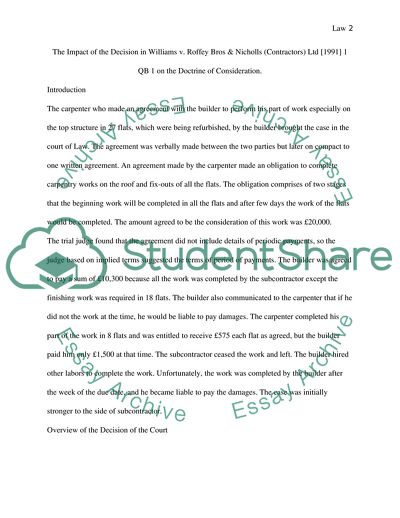Cite this document
(Williams Versus Roffey Bros & Nicholls Ltd Report - 1, n.d.)
Williams Versus Roffey Bros & Nicholls Ltd Report - 1. https://studentshare.org/law/1855256-explain-the-impact-of-the-decision-in-williams-v-roffey-bros-nicholls-contractors-ltd-1991-1-qb-1-on-the-doctrine-of-consideration
Williams Versus Roffey Bros & Nicholls Ltd Report - 1. https://studentshare.org/law/1855256-explain-the-impact-of-the-decision-in-williams-v-roffey-bros-nicholls-contractors-ltd-1991-1-qb-1-on-the-doctrine-of-consideration
(Williams Versus Roffey Bros & Nicholls Ltd Report - 1)
Williams Versus Roffey Bros & Nicholls Ltd Report - 1. https://studentshare.org/law/1855256-explain-the-impact-of-the-decision-in-williams-v-roffey-bros-nicholls-contractors-ltd-1991-1-qb-1-on-the-doctrine-of-consideration.
Williams Versus Roffey Bros & Nicholls Ltd Report - 1. https://studentshare.org/law/1855256-explain-the-impact-of-the-decision-in-williams-v-roffey-bros-nicholls-contractors-ltd-1991-1-qb-1-on-the-doctrine-of-consideration.
“Williams Versus Roffey Bros & Nicholls Ltd Report - 1”. https://studentshare.org/law/1855256-explain-the-impact-of-the-decision-in-williams-v-roffey-bros-nicholls-contractors-ltd-1991-1-qb-1-on-the-doctrine-of-consideration.


